Last week I visited the last divided city in the world for the first time. The inevitable online search for tourist attractions in the Cypriot capital highlighted the United Nations Buffer Zone (or ‘Green Line’) as a must-see. It was also recommended that tourists bring their passports and cross over into the Turkish side of the city. Having previously visited Belfast’s ‘peace walls’ and the few remaining sections of the Berlin Wall, I was keen to see how the urban landscape of Nicosia had been shaped by conflict. So, my friend and I gathered our passports and set off from our hotel to explore the Greek and Turkish sides of the city.
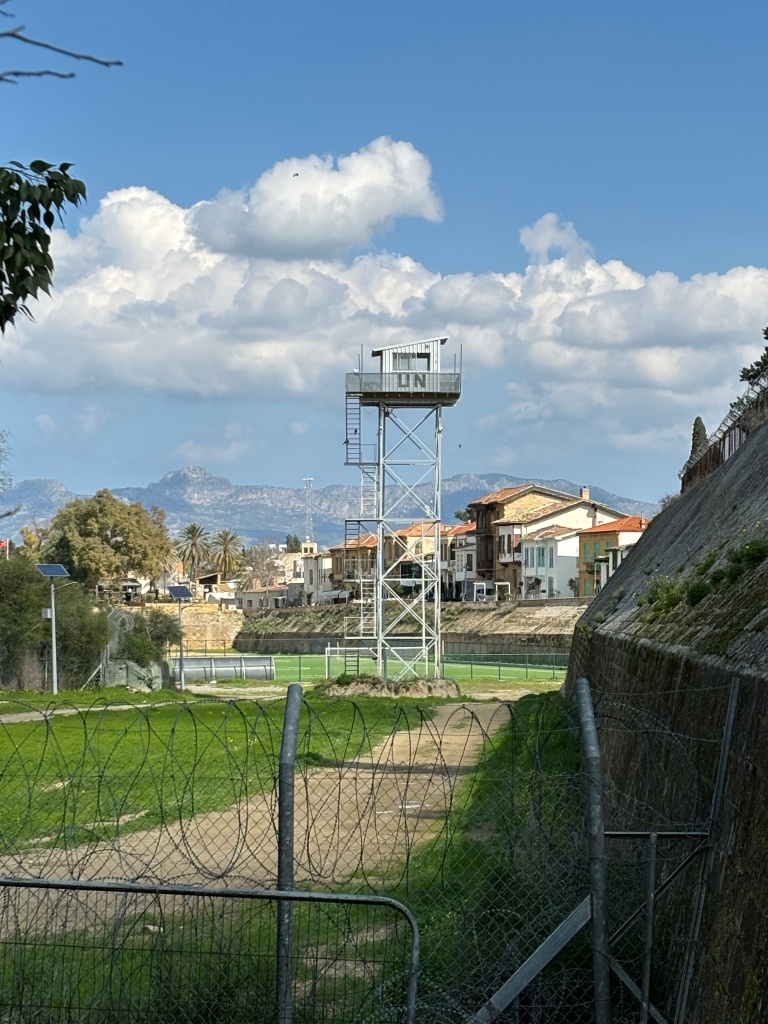
Our first stop was the Green Line Hut, an abandoned security checkpoint situated close to the buffer zone. A Greek flag painted on a nearby wall and a series of ‘Stop’ signs were visible reminders of its previous function. These were overshadowed by an even larger warning sign telling tourists that photographs were prohibited. A few yards away was our first glimpse of the buffer zone. Boarded up buildings were visible behind barbed wire fences. A sign on a security access gate confirmed entry was forbidden and warned that no parking was permitted in front of it.

What was particularly striking was how everyday life continued as normal in the immediate vicinity. A large green bin was stationed in front of the Hut. We also witnessed a resident bringing shopping into their house, which was on the ‘Green Line’ and only a few metres away from the abandoned buildings in the buffer zone.

Our next stop was the Ledra Palace Border Crossing Point. A sign next to the checkpoint on the Greek side showed pictures of two men who had lost their lives protesting against the Turkish occupation
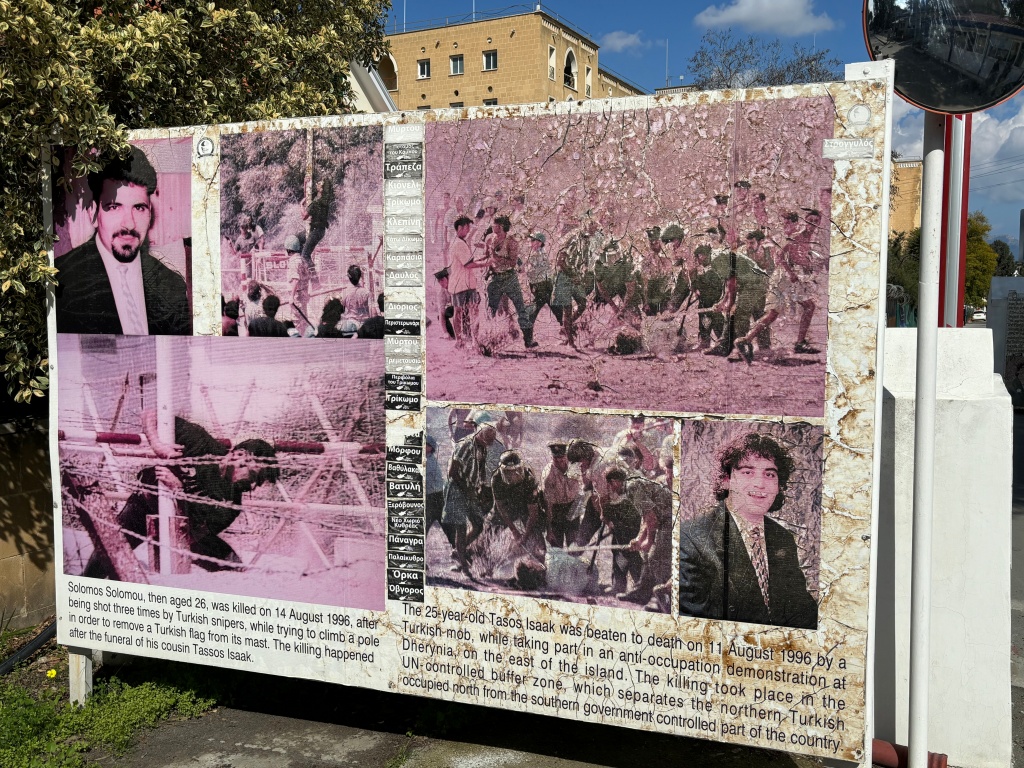
A quick inspection of our passports and we were finally in the UN controlled area. Signs of the UN presence were everywhere, from car park spaces reserved for its personnel to signs outside the Ledra Palace Hotel (now a UN base) outlining its various peace initiatives on the island.
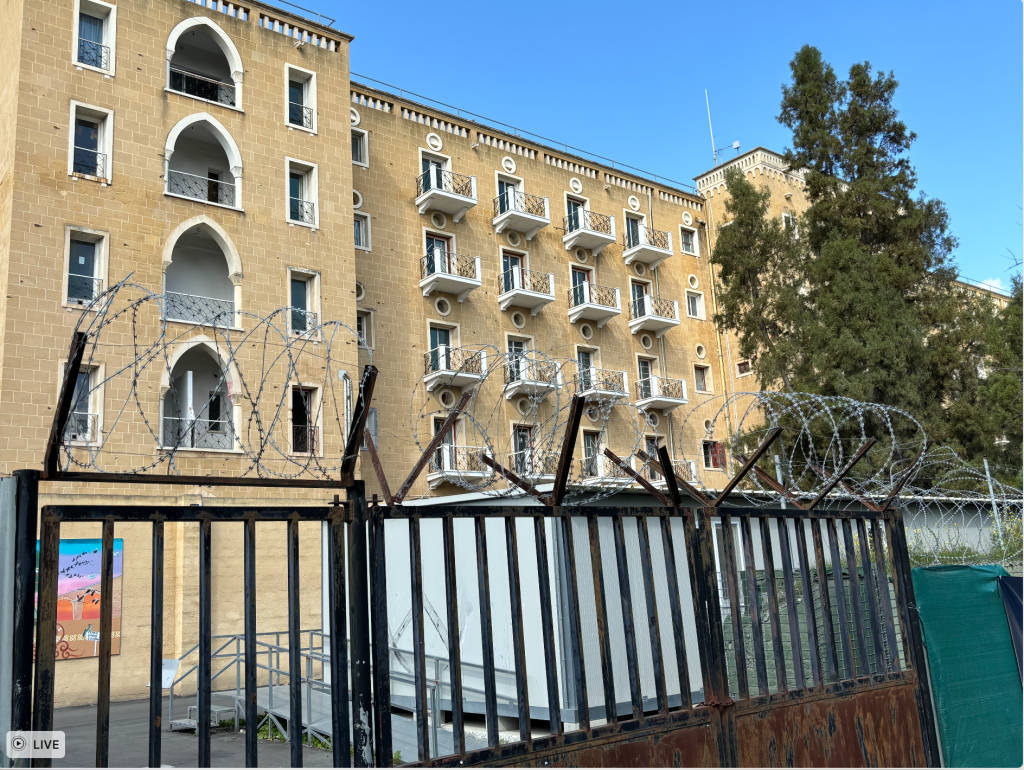
Yet just across the road an abandoned house, with sandbags instead of windows and weeds growing over its roof, was a visual reminder of the violence 50 years earlier.
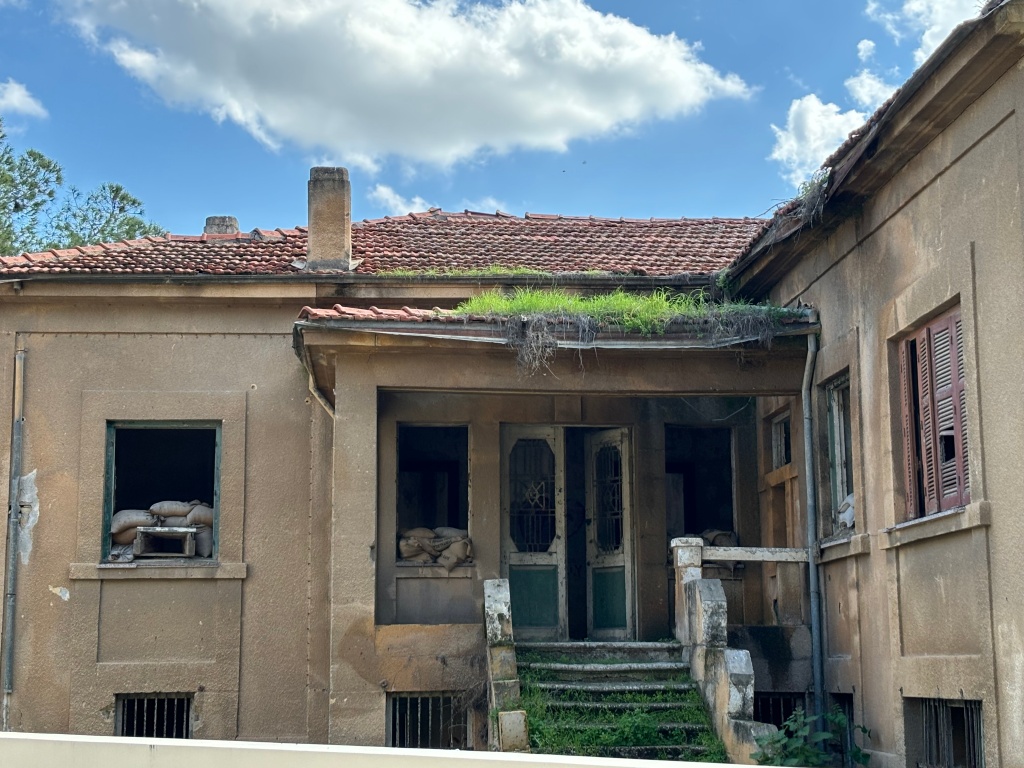
A few hundred yards down the road we arrived at the next checkpoint, marked by several Turkish flags and a banner declaring ‘Turkish Republic of Northern Cyprus FOREVER’.
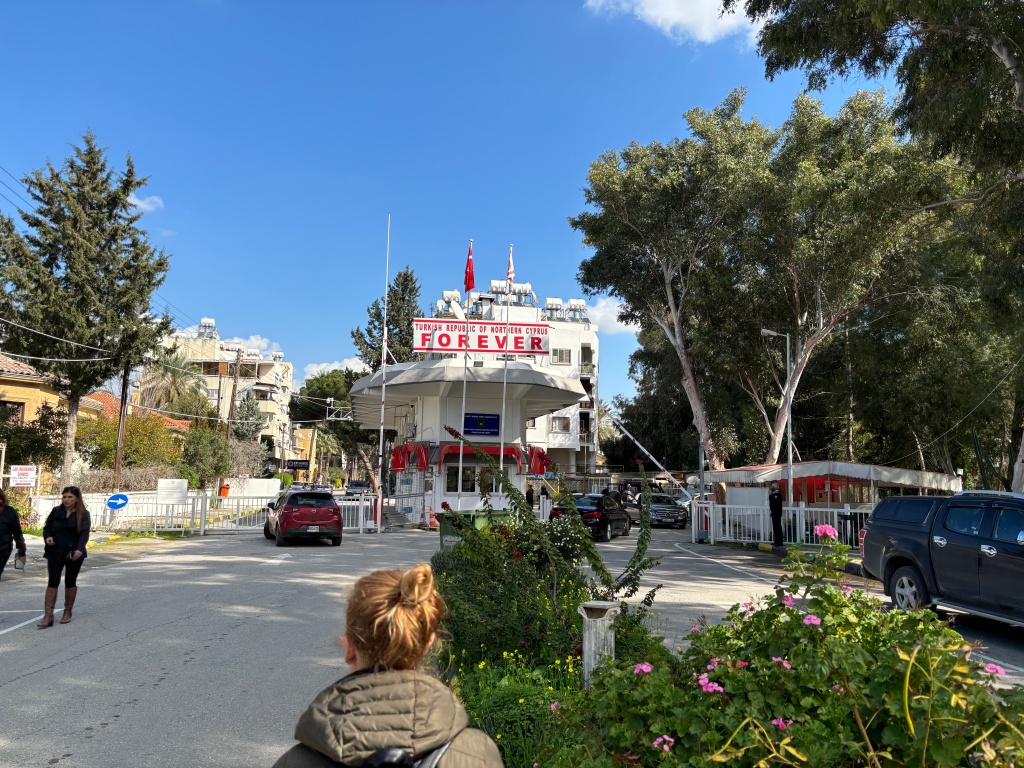
We had been told that the north felt very different than the south. This was certainly our experience. There were few modern high-rise office blocks and the high-street stores near our hotel were nowhere to be seen. Instead, a mix of gold, jewellery and fake designer gear were on display in the predominantly empty shops we passed. In contrast to the Costa and Starbucks in the south, men sat outside Turkish coffee houses and restaurants playing dominos and other board games. What appeared to be a vintage Pepsi billboard outside a café was emblematic of a city that had barely changed in decades.
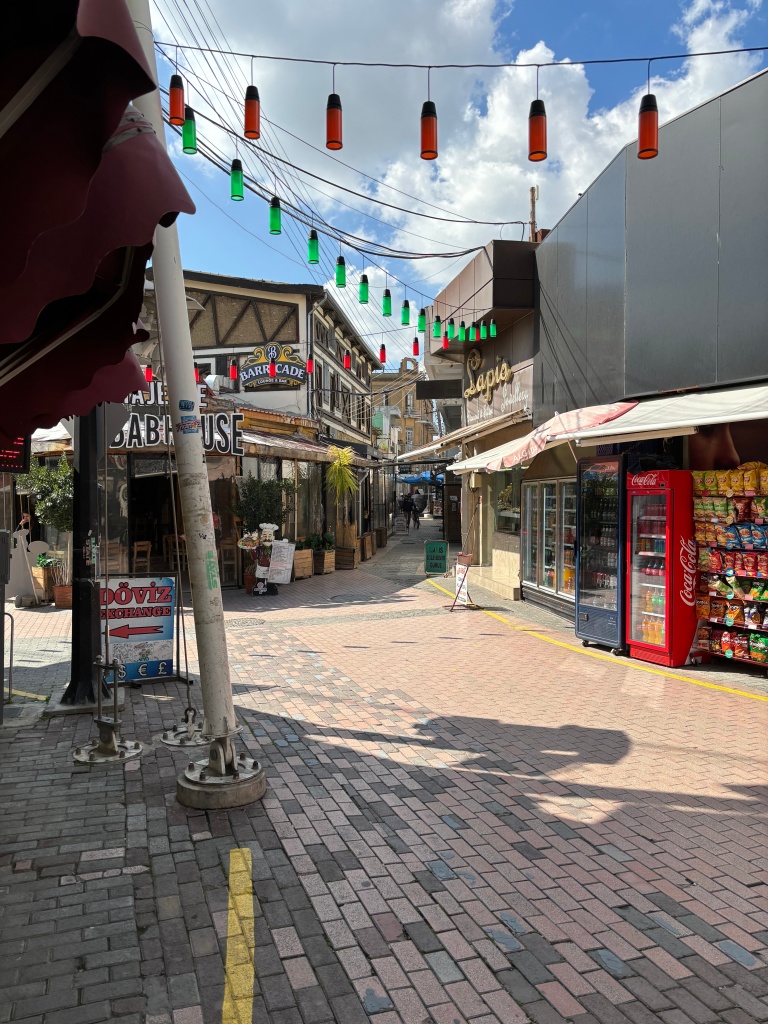
Returning across the border, we walked along the Green Line from the southern side. At the aptly named Berlin Café I was warned by a soldier not to take photographs of a military lookout post. We were able to peer over into the buffer zone by standing on a bench, against the backdrop of a banner calling on tourists to ‘Remember Cyprus’.
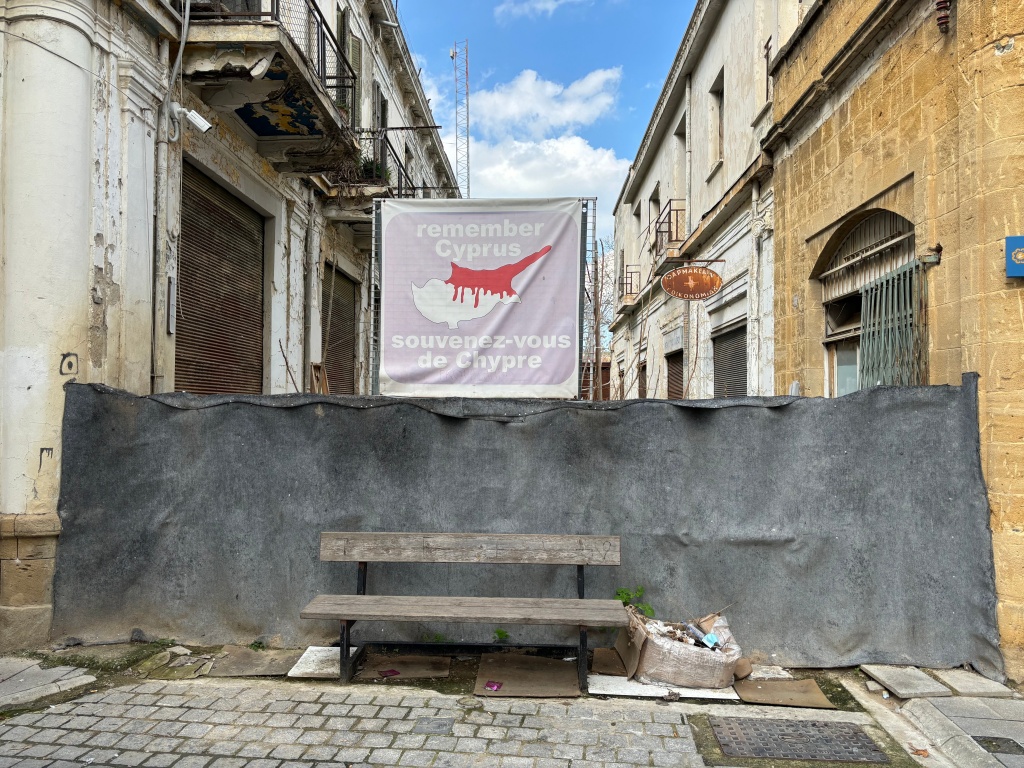
Once again, there was a sense that local residents were going about their daily lives against the eerie backdrop of the Green Line. A white car was parked next to a barricade of white oil drums and barbed wire close to the Church of the Holy Cross. A banner welcomed Pope Francis on behalf of the Catholic community of Cyprus.
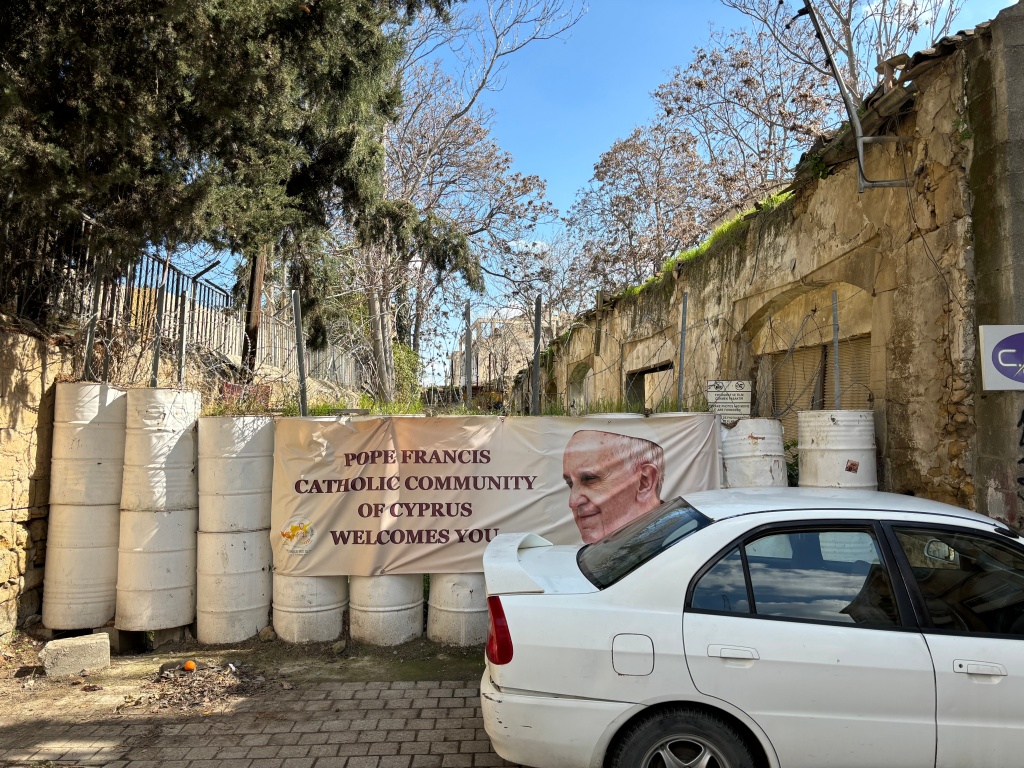
I would strongly recommend walking the Green Line in Nicosia if you haven’t done so before. It serves as a reminder of the devastating impact that war has on people’s lives, possessions and property. Hopefully a solution to the ‘Cyprus problem’ can be found, one which sees a complete demilitarisation of the buffer zone and a new life returning to this decaying urban landscape.
